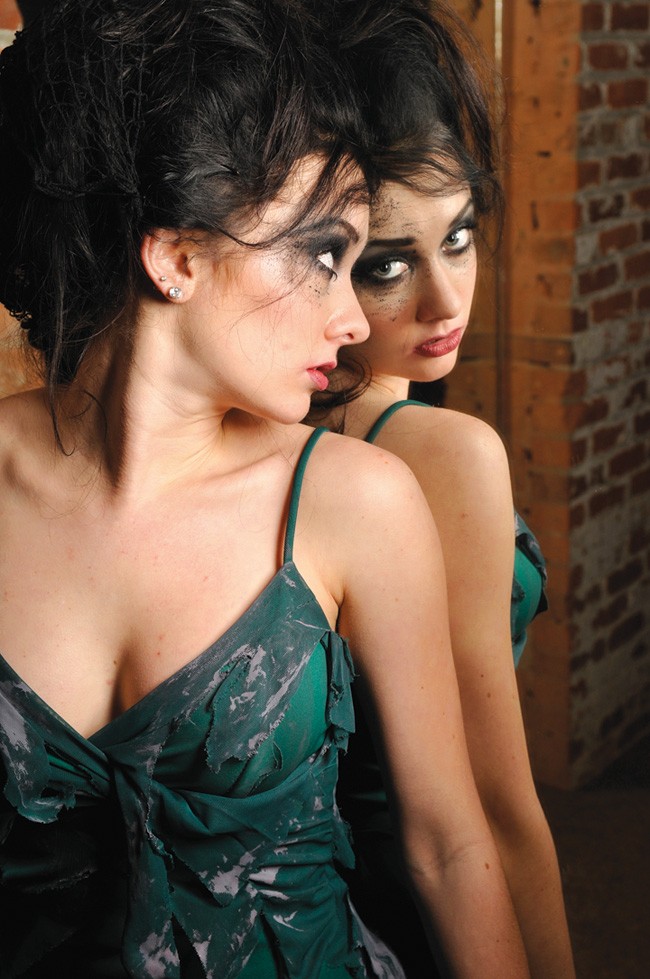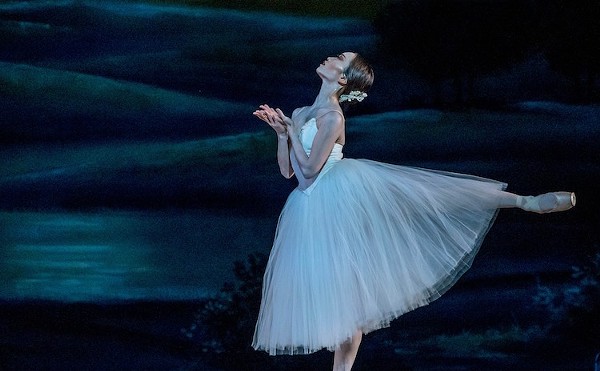Bob Carr Performing Arts Centre
401 W. Livingston St.
407-426-1739
orlandoballet.org
It’s all about interpretation when it comes to ballet. Each flick of a wrist, each raised chin or downward gaze – you have to read between the lines. Do the dancers leap with fury or with grace? Do they fall willingly into partners’ arms or quickly bourrée offstage? The stylized gestures are meant to evoke authentic human interaction, but perhaps all that interpretation feels like too much work; maybe the stories being told seem impenetrable; or maybe you fear being bored by the precise, predictable movements and classical music. This year, Orlando Ballet approached its programming with exactly those thoughts in mind. In fact, the entire season is designed to eliminate those preconceived notions.
Nearing his third year as Orlando Ballet’s artistic director, Robert Hill remains committed to connecting audiences to ballet on a more relevant, emotional level. While the company laments the loss of Patric Palkens (a lead in last year’s Battle of the Sexes II, Giselle and Carmen) to Cincinnati Ballet, they’re eager to feature seasoned dancers Daniel Benavides, A reum Chung and Katia Garza, and to invite former Orlando Ballet apprentice David Kiyak into the main company. Former Orlando Ballet II dancers have advanced from the second string to apprentice and main-company roles, and there are brand-new additions to the company, too: Lamin Pereira dos Santos from Brazil, Nieser Zambrana Reyes from Cuba and new apprentice Telmo Gomes Moreira from Portugal.
In addition to these new faces, Hill created a new program called the Inside Series that aims to eliminate the distance between audience and choreographer. Beginning with Inside: The Nutcracker, the company will invite the public to the Abbey for peeks at upcoming shows. They’ll explore Hill’s choreographic process – how performances evolve from classic, full-length ballets to Hill’s contemporary renditions; how his interpretive choreography translates into storylines – and attempt to narrow that persistent gap between wary audiences and ballet. It’s not just another series to add to the list, but rather a plot to advance Hill’s artistic goals.
Per usual, Orlando Ballet will stage several shorter-length, age-appropriate matinees for the Family Series, each preceded by an hour of kid-friendly activities. One new development in the Family Series: The Sleeping Beauty will be choreographed by Chiaki Yasukawa, one of last season’s stars, whose pregnancy and consequent inability to dance encouraged Hill to utilize her choreographic abilities and give himself much-needed time to further assume his role as artistic director.
Whereas many ballet companies typically hire some outside choreographers, budgetary restraints have forced Hill’s hand into each Orlando Ballet production. Yes, it’s allowed Hill to choreographically renovate the company, but it intrudes on his ability to holistically oversee the season as an artistic director traditionally does. Orlando Ballet marketing and sales manager Scottie Campbell views this as both a blessing and a curse.
“It’s really unusual for the artistic director to be at the helm of every single main-stage performance,” Campbell says. “It’s partly a budgeting issue and it’s something we’d like to work past. But he’s completely reshaping Orlando Ballet. It’s a blessing for us, too. He’s moving us into new territory and making us a dance company that Orlando can be proud of.”
Hill, though, is more eager to push the company into new choreographic terrain.
“We’re preparing the budget for next year so I can bring in outside choreographers,” he says. “My intention when I first came here wasn’t to become the full choreographer, but in the natural progression it turned out that way.”
For now, Hill remains this season’s chief choreographer. With the main company’s fresh faces and an unusually strong second company following close behind, Hill intends to carry this season into risky contemporary ground and rattle the walls that have long constricted ballet.
“There’s still this preconceived myth that ballet is tutus and tiaras and boring, boring, boring,” Hill says. “And then people experience the ballet and get really interested because of the edginess. We’ll continue to do the classics. They’re classics for a reason. But it’s possible to continue to explore. We can do contemporary, edgy work and still preserve the tradition of the classics.”
Orlando Ballet 2011-2012 Season Highlights
Vampire’s Ball
8 p.m. Oct. 21-22, 2 p.m. Oct. 23; $15-$75
An entirely original work choreographed by artistic director Robert Hill, Vampire’s Ball will feature the main company, apprentices, second company and Orlando Ballet students in a series of vignettes. Although its theme caters to Halloween, much as The Nutcracker does to Christmas, Hill thinks it will please audiences that embraced the provocative modernity of Battle of the Sexes and Carmen.
The Nutcracker
7:30 p.m. Dec. 15-17, 2 p.m. Dec. 18; $20-$75
There’ll be little deviation from the traditional snowflakes and sugarplums this season. Hill’s making choreographic changes and additions at a slow, season-by-season pace, and wisely so; Marius Petipa’s century-old choreography is ingrained in every ballet lover’s memory. Expect Hill’s minor changes to come from his own production, staged when he directed Mexico’s Ballet de Monterrey.
Battle of the Sexes III
8 p.m. Feb. 10-11, 2 p.m. Feb. 12; $15-$75
There’s a reason this production returns for a third time this season. It’s what seized Orlando’s attention during Hill’s first season and inspired Hill to continue choreographing fresh, radical productions. This version consists of more fiery pas des deux and dynamic group numbers that allow the majority of the company to shine. Ironically, Hill says the original idea was a last-minute choice, one that was born from the chaos of deadlines that existed upon his entry into the company, yet it allowed him the freedom to produce concepts without limiting choreographic possibilities.
Swans: Black & White
8 p.m. March 30-31, 2 p.m. April 1; $22-$30
There’s no doubt that post-Black Swan, Swan Lake is on the pop-culture radar. Hill’s full-length version of Petipa’s original condenses the first act – the prince has a birthday, his mother gives him a crossbow and reminds him he must marry – and springs into the second. Hill has also moved the first act’s infamous pas de trois to the ballroom scene of the third act, which will likely be the heart of this performance.

















